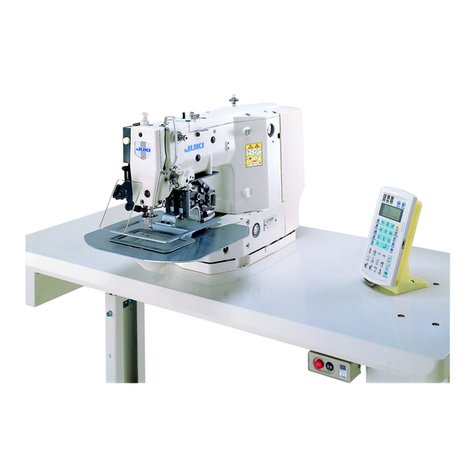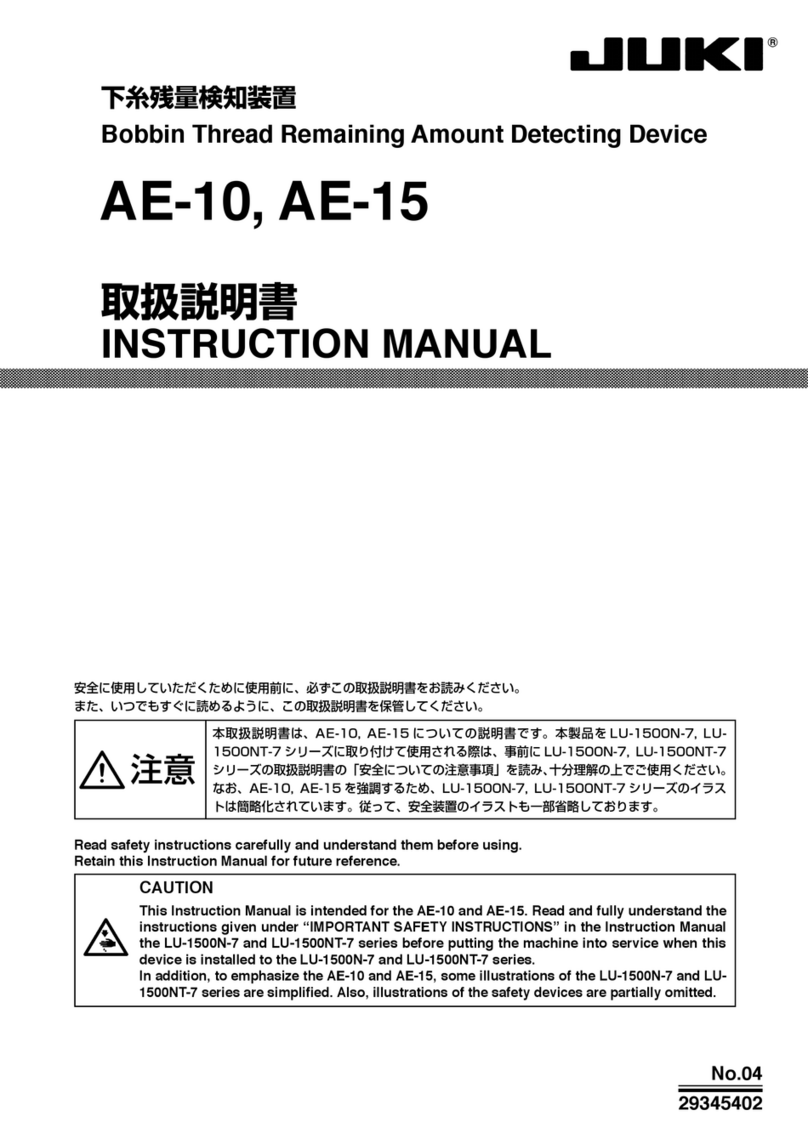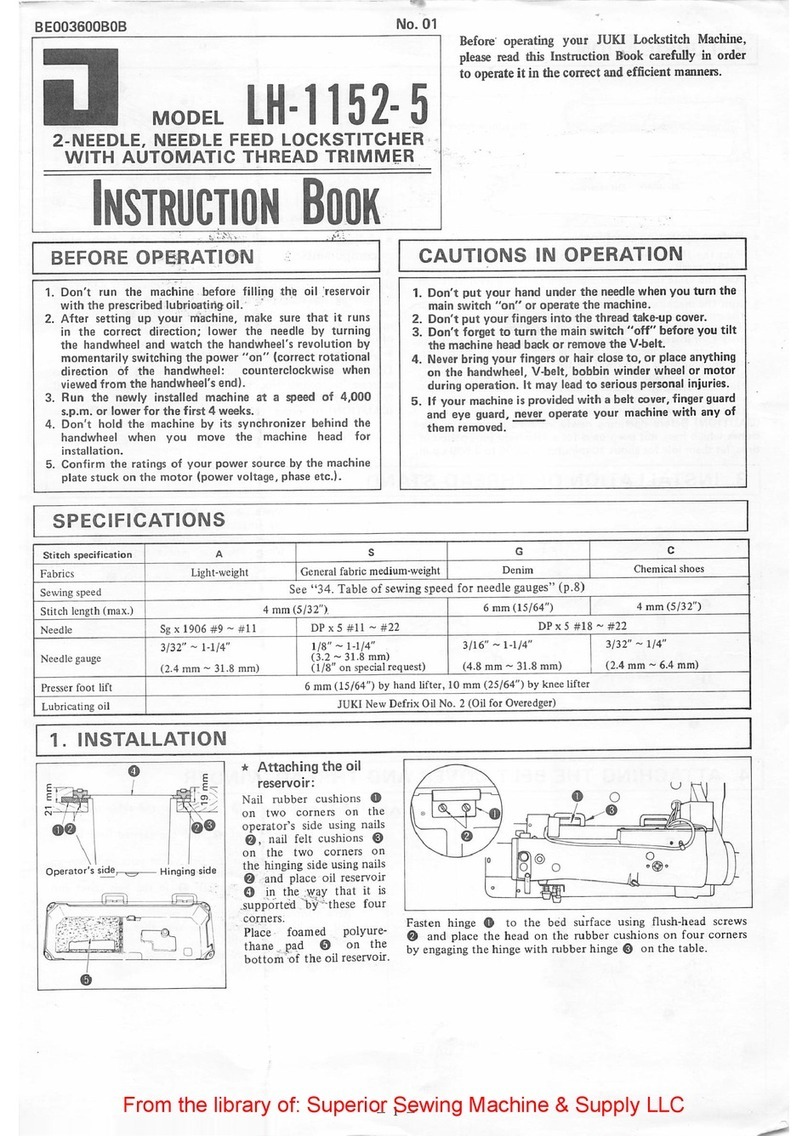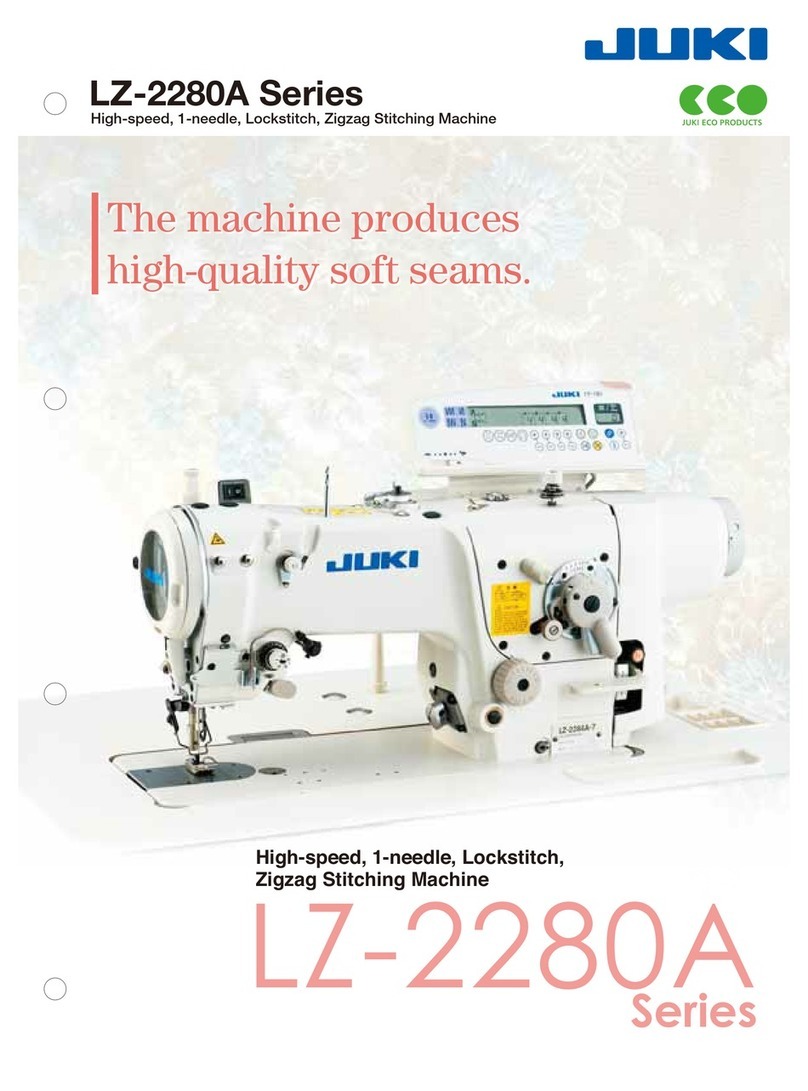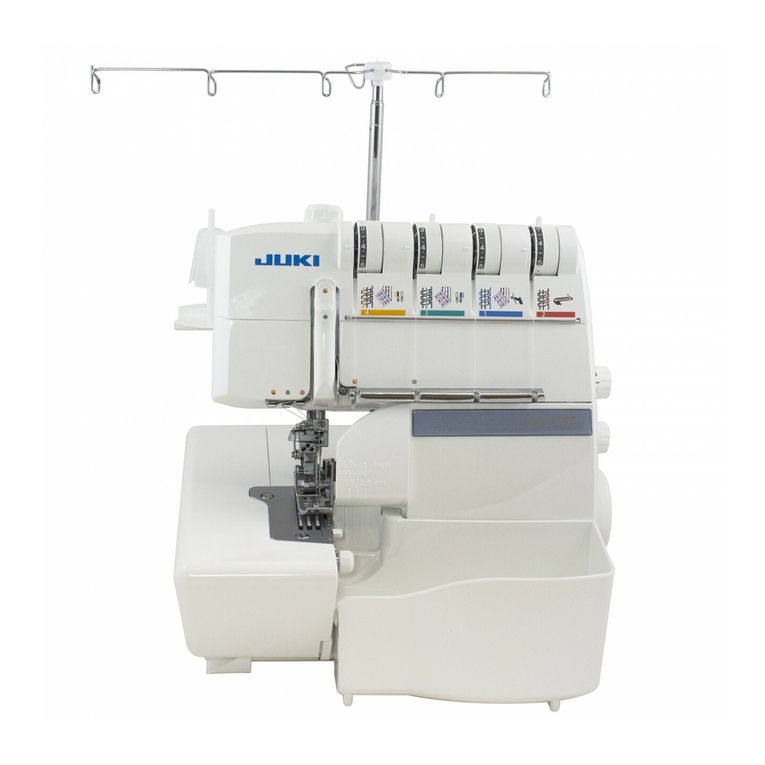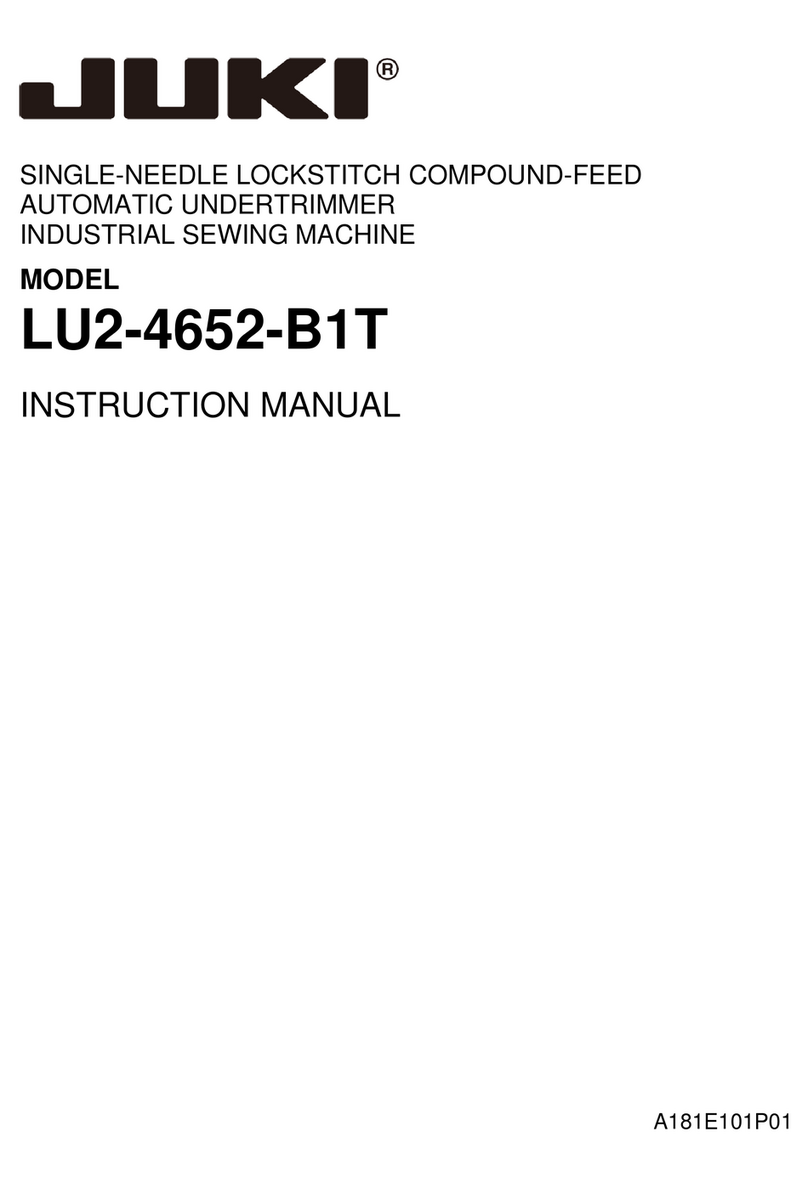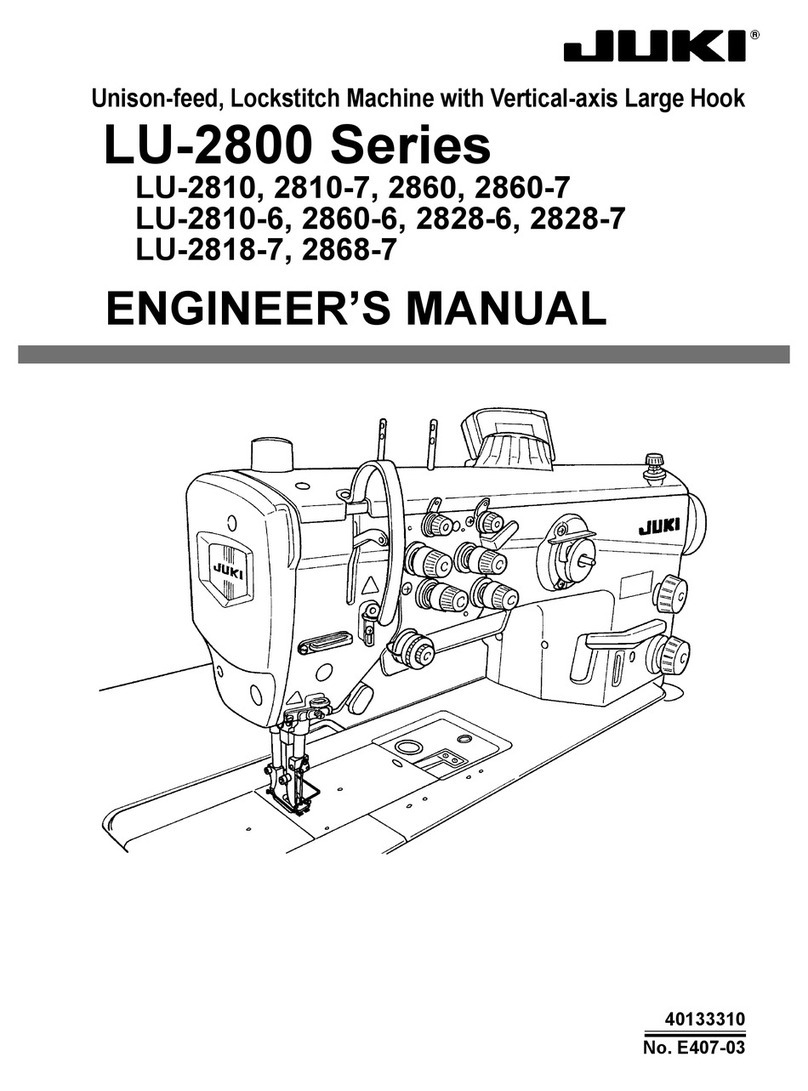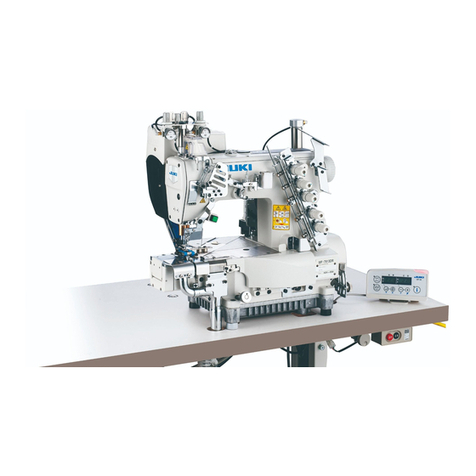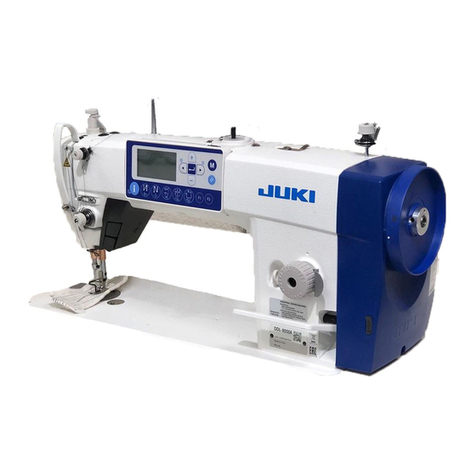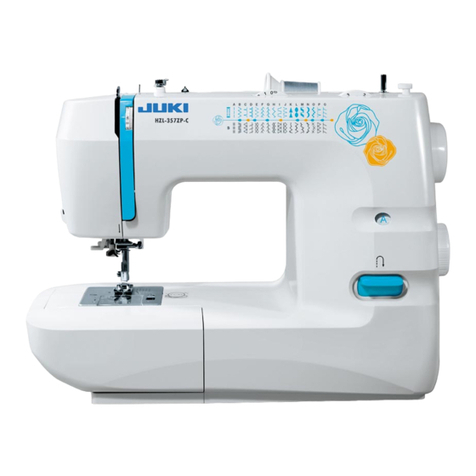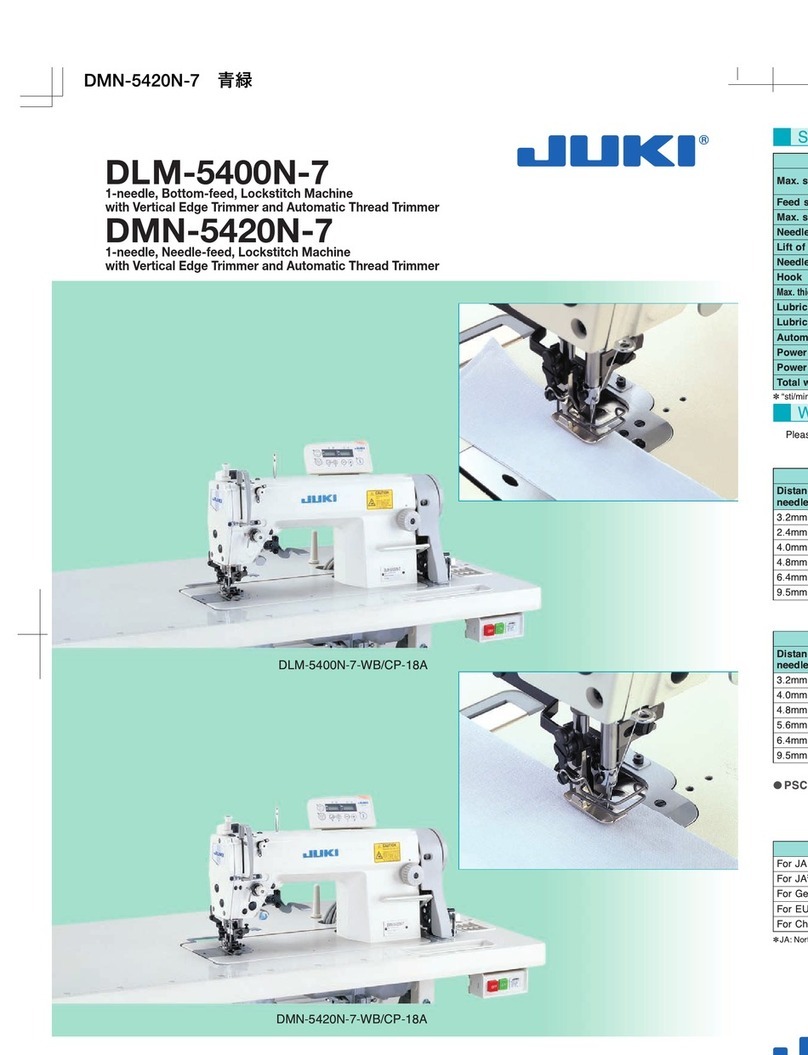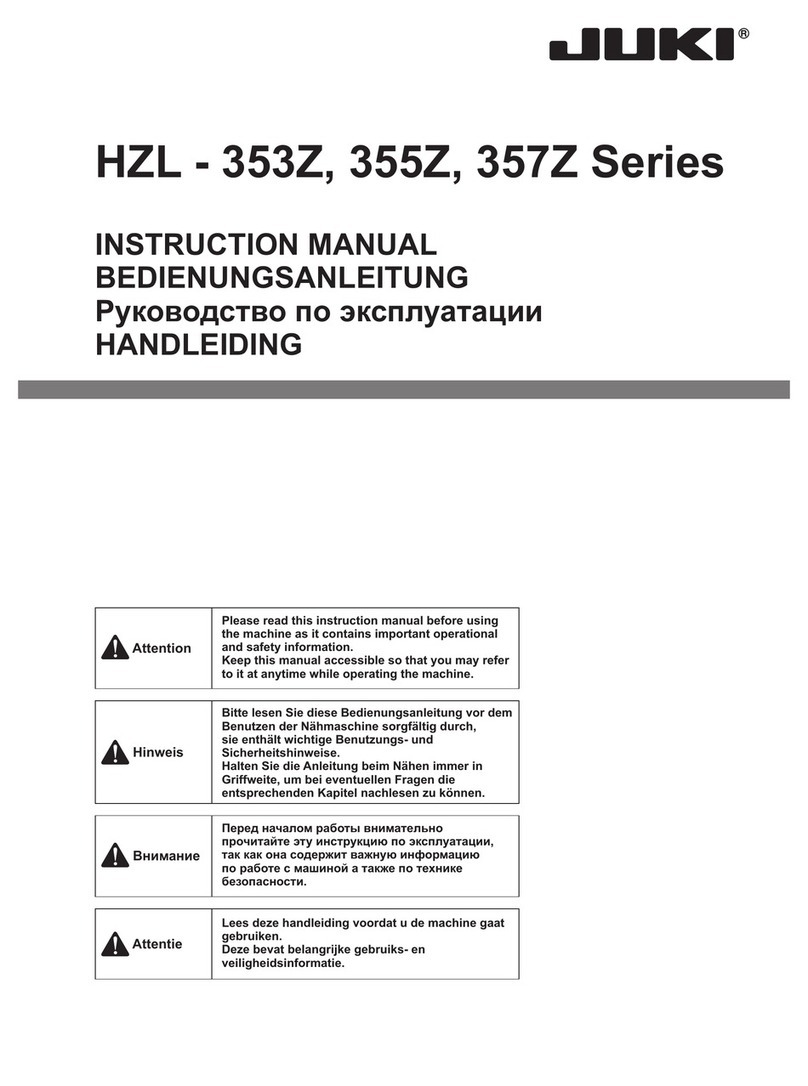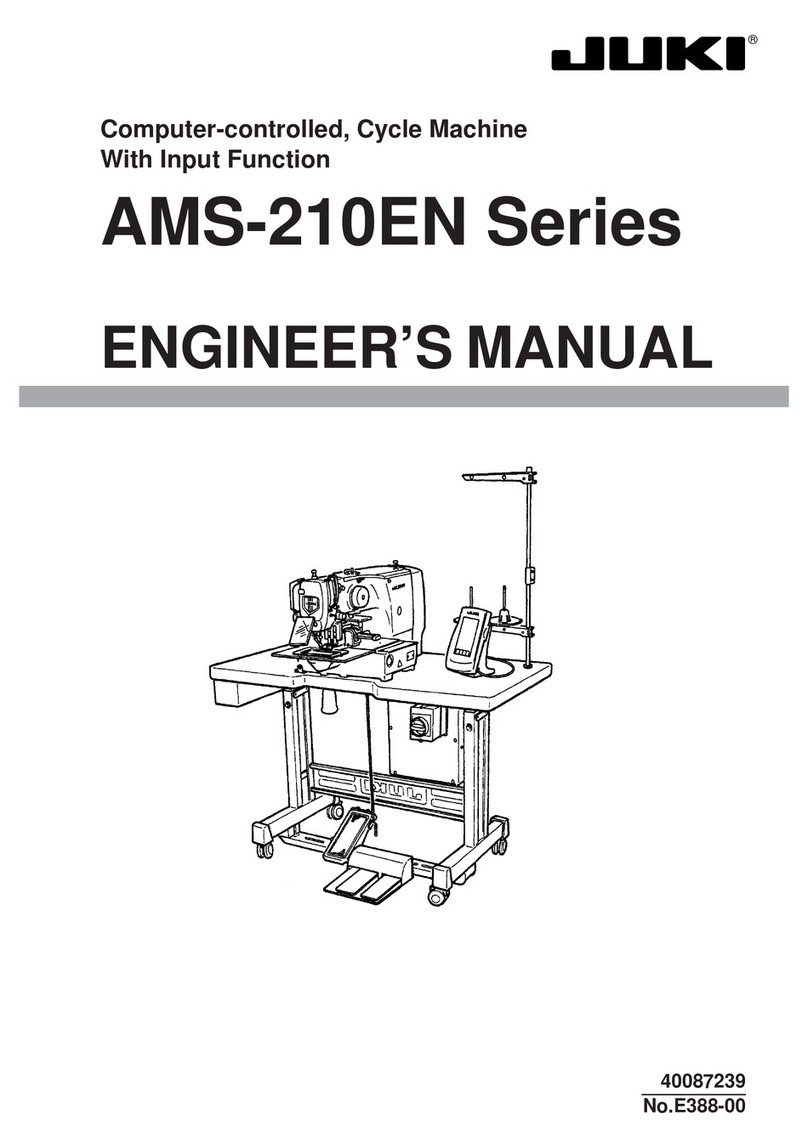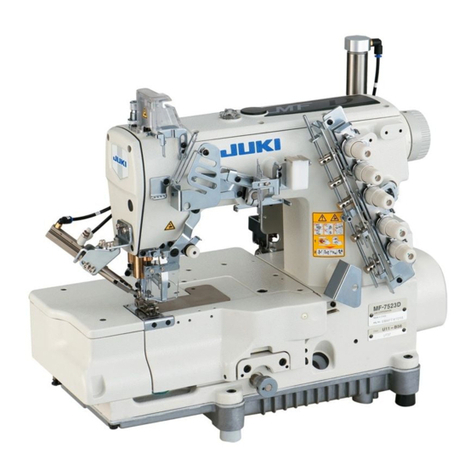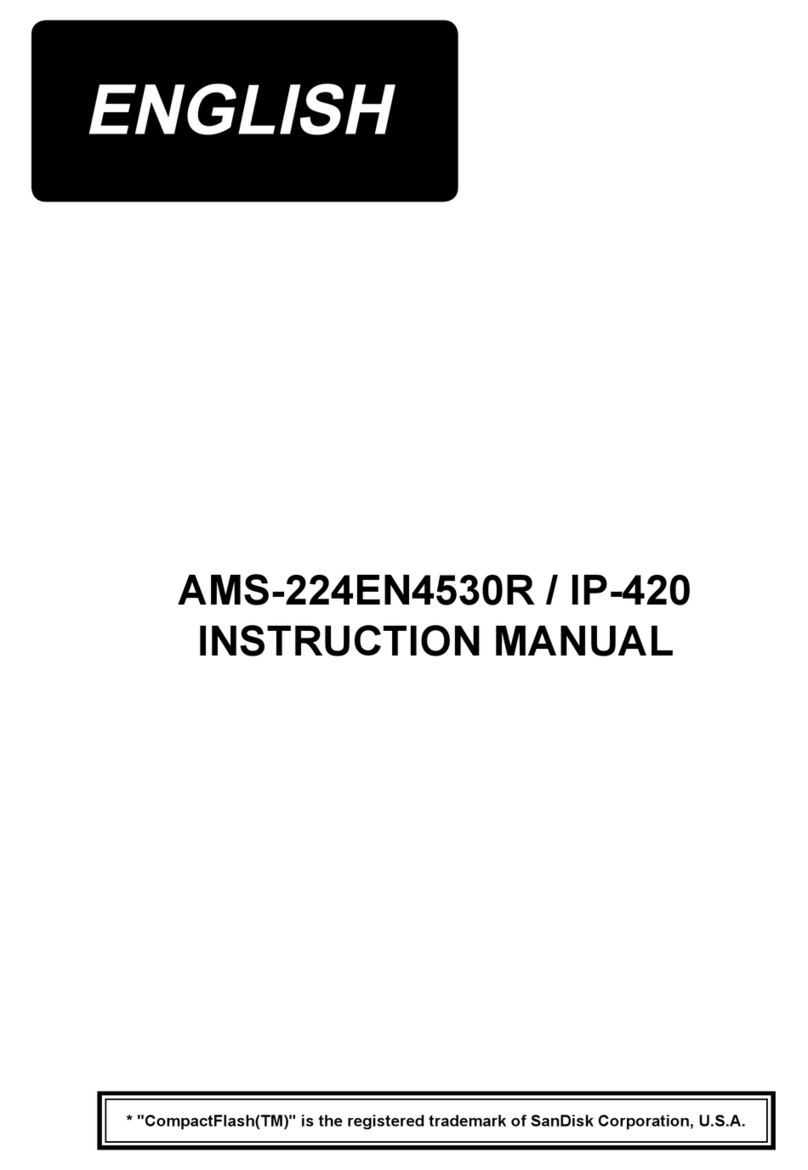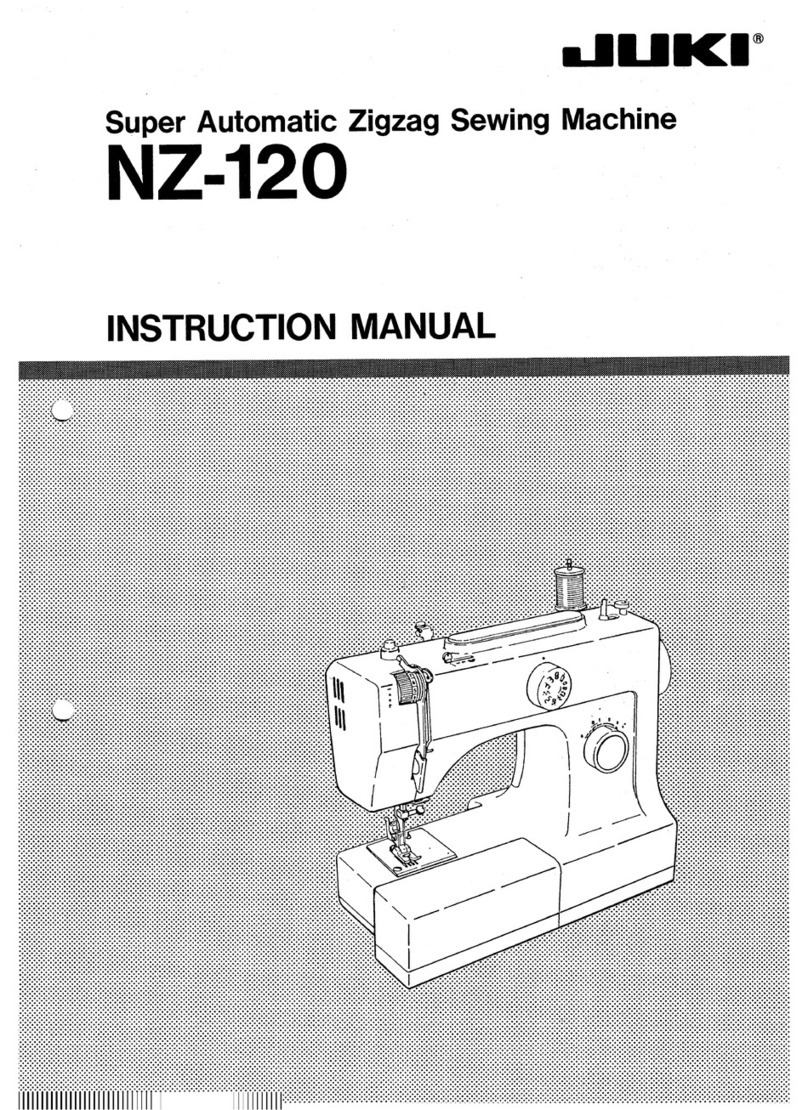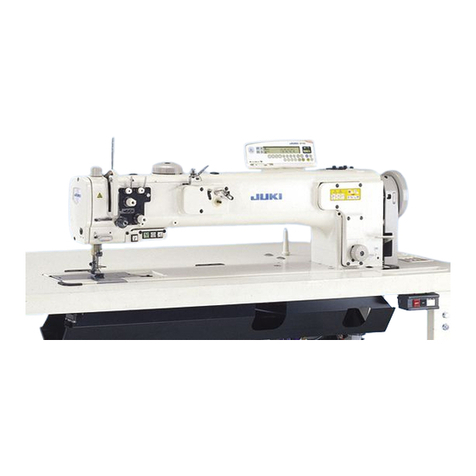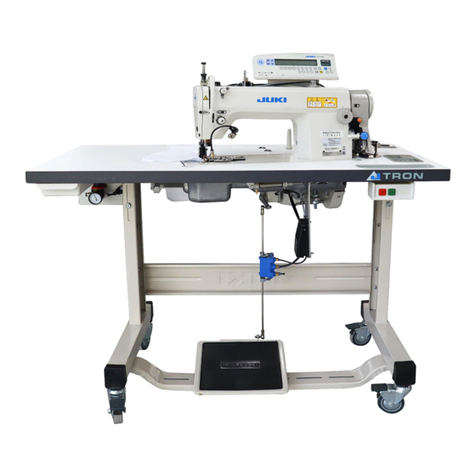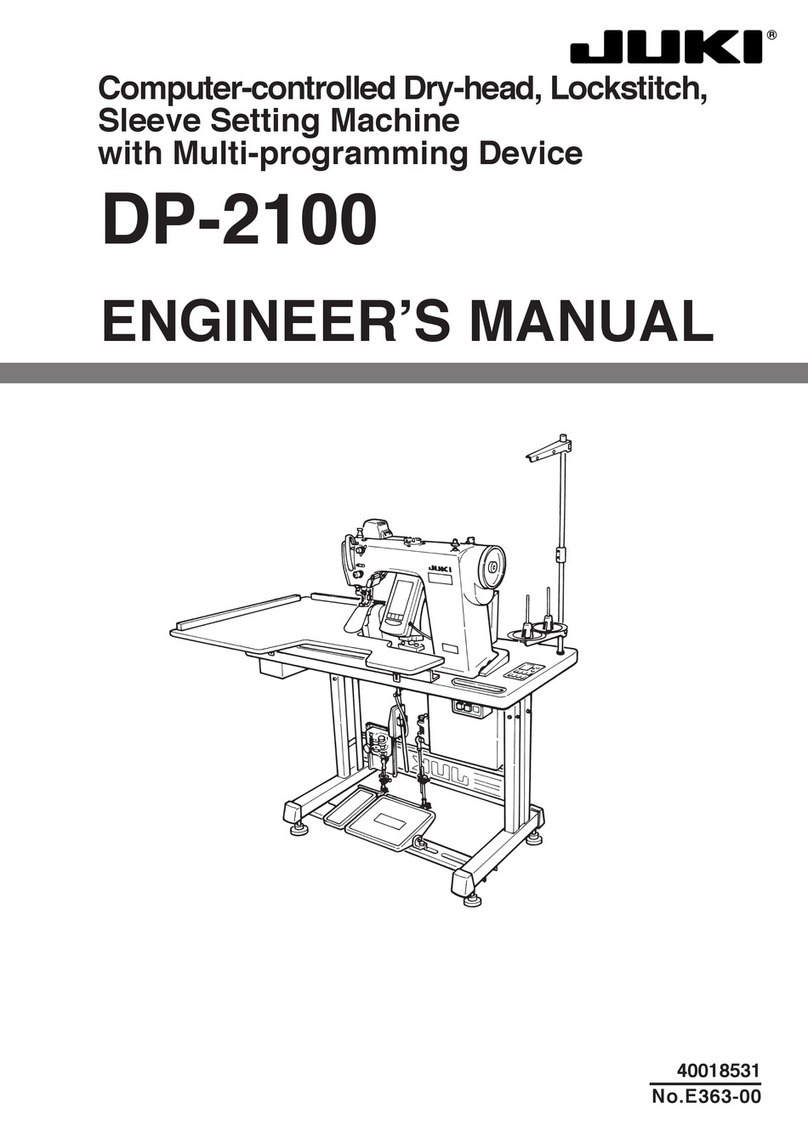
i
CONTENTS
1. SPECIFICATIONS..................................................................................................................... 1
2. CONFIGURATION..................................................................................................................... 2
3. INSTALLATION ......................................................................................................................... 3
3-1. Setting up the sewing machine ....................................................................................................3
3-2. Installing the air hose ....................................................................................................................9
3-3. Cautions for the compressed air supply (source of supply air) facility .................................10
3-4. Installing the bobbin winder device ...........................................................................................11
3-5. Precautions for installation of the machine ..............................................................................11
4. PREPARATION OF THE SEWING MACHINE........................................................................ 12
4-1. Lubricating method and check of the oil quantity....................................................................12
4-2. Attaching the needle....................................................................................................................13
4-3. Threading the machine head ......................................................................................................14
4-4. Bobbin replacement procedure..................................................................................................15
4-5. Adjusting the thread tension ......................................................................................................16
4-6. Adjusting the thread take-up spring and the thread breakage detector plate .......................17
4-7. Adjusting the thread take-up stroke...........................................................................................17
4-8. Needle-to-hook relationship........................................................................................................18
4-9. How to wind a bobbin..................................................................................................................19
4-10. Adjusting the needle bar height..................................................................................................20
4-11. Adjusting the position of the thread trimmer ............................................................................21
4-12. How to attach / remove the cylinder lifting plate ......................................................................23
4-13. How to conrm the amount of oil (oil splashes) in the hook...................................................24
4-14. Adjusting the amount of oil in the hook.....................................................................................25
4-15. Adjusting the needle hole in the throat plate and the needle ..................................................26
4-16. Setting the mechanical origin .....................................................................................................27
4-17. Adjusting the disk presser pressure ..........................................................................................28
4-18. Adjusting the thread end position at the beginning of sewing................................................29
4-19. Adjusting the electronic intermediate presser stroke ..............................................................30
4-20. Adjusting the function for holding the thread by blowing air upward ....................................31
4-21. Making a template ........................................................................................................................32
4-22. Preparation for sewing ................................................................................................................34
4-23. Conguration of the operation panel .........................................................................................36
4-24. Maintenance mode.......................................................................................................................38
4-25. List of parameters ........................................................................................................................39
4-26. List of error codes........................................................................................................................45
5. MAINTENANCE OF SAWING MACHINE............................................................................... 50
5-1. Troubles and corrective measures (Sewing conditions)..........................................................55

